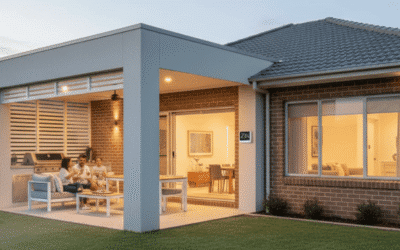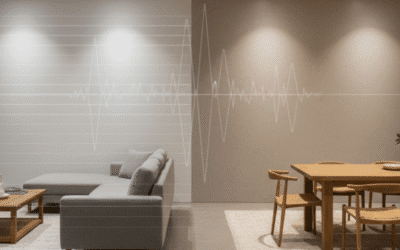Does home automation increase the value of your home is one of the most often asked questions for smarthome integrators.
And when googling this term, no doubt you will find a lot of articles from people selling smarthome products, trying to convince homeowners the answer is yes.
I think its entirely the wrong question to be asking for a number of reasons.
The primary reason ‘does home automation increase the value of your home?’ is the wrong question is because what something is worth is different for everyone.
Value is subjective and without hard facts and figures, of which there are none of any worth for smarthomes (independent research & results for Australian cities for example) it will remain that way.
Making a blanket statement that smarthome technology increases the value of your home is misguided and self-serving.
If the buyer doesn’t care about smarthome tech, or worse, does not want a smarthome, then how can that add value?
It cant.
A home is worth what someone is willing to pay on the day.
Period.
Yes there are a lot of different factors that influence a buying decision and these vary further depending on whether the purchase is for an investment or a principle place of residence. These include location, state of repair/disrepair, safety, land rates, insurance premiums, feeling, fear of missing out, emotional attachments - and the list goes on
And the same is true for a renovations, with Australians spending about $20,000 for kitchen renovations and $13,000 for bathroom renovations according Houzz.
A good rule of thumb is to spend within 2% of your home’s value in order to add significant value, without over-capitalising according to Local agent finder and one metric used below to provide some pricing guidance for reasonable smarthome budgets.
Just ask yourself, how much more are you willing to pay for a new home or a renovation that HAS smarthome technology versus one that doesn't have it?
Is that even one of the questions you ask when evaluating a purchase of $500,000 or $1,000,000 home?
Probably not.
More likely you want to understand the appreciation of the area over the last 5-10 years, the crime rate, what the neighbours are like, if there are enough bedrooms for everyone and so on.
And given technology changes, adding smarthome tech to your home now is an order of magnitude easier and cheaper than it was even just 5 years ago.
Why Install Home Automation then?
If you’re considering upgrading to a smarthome as part of a renovation or buying a new apartment our house with smarthome technology, the best reason to consider it is so you can use it whilst you are living there.
And that’s the root of this question.
Does a smarthome enhance your lifestyle whilst you are living in the residence?
And, how much is that enhancement worth to you?
These home lifestyle enhancements fall under 5 categories.
- Comfort
- Convenience
- Security
- Safety
- Savings (energy)
We’ll add in status as a final one here as well which means being able to show off your smart house to your friends and family when they come over.
Good News - A Smarthome is More Affordable Than Ever Before.
Gone are the days when having a smarthome was reserved for the super-wealthy or those in very large homes.
Wireless technologies and scaled manufacturing has reduced the price and increased the capabilities of smarthome technology to a point where the average Australian homeowner is able to automate at least a few of the most important rooms in their homes for less than the cost of a smartphone.
Smarthome systems like SAL PIXIE are a powerful not pricey way to get started in automating your home and all licensed electricians can install it and set it up for you so non need for an more expensive systems integrator.
Start Small and Expand
In the past it was an all-or-nothing project with smarthomes because of the extra burden of specialised wiring, for electrical and communications for these systems and the specialised ‘house programming’ needed to make everything work.
Now with technology like Bluetooth mesh, its possible to start on your home automation journey and retrofit your existing light switches with a PIXIE smart dimmer or smart switch, add some highlight LED in the kitchen and bathrooms and add a smartplug or 2 for table and wall lamps, or control of the kids Playstation to limit screen time automatically.
The benefits of starting off with just a few spaces in your home are that you get to live with the technology, understand what else you could do that will actually enhance your lifestyle, before committing to a complete system install.
And as systems like SAL PIXIE don’t need any special wiring or changes to how your home is wired electrically, or any specialised house programming beyond a simple setup, one of the most cost-effective ways to start.
Finally Lets Look at the Numbers.
Spending $1,000-$2,500 on a small smarthome system either as part of a renovation or included in your new home build is a very small price to pay considering the median house prices.
But only if you think it will enhance your lifestyle. That’s its purpose.
Right now the average median house price in Australia is > $809,349 and the median apartment price is $565,024
Spending $20,000 or $30,000 is clearly too much, an overcapitalisation, if we use the 2% rule of thumb mentioned above.
Those legacy smarthome systems could reach this number easily due to the extra wiring overheads and programming needs.
But a $5,000 (2% of 1million) smarthome upgrade on a 4 bedroom home, with a system like SAL PIXIE will provide you a very smarthome and a really good place to start.
A $2,500 smarthome upgrade in a 2 bedroom apartment with SAL PIXIE is likely to provide a lot of value to enhance your lifestyle too, if not provide control of everything PIXIE can control.







[…] Many providers state the smarthome technology increases the value of your home, and that may be true – read this article to understand why sometimes it does and sometimes it doesn’t. […]
[…] Likewise, if your upgrading some LED lighting and have some additional lighting circuits and power points installed for a budget of $5,000, does spending 25% of that budget make sense to you for the lifestyle enhancements you’ll receive and in increased home value? […]